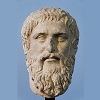6.7: Conclusion and Global Perspectives
- Page ID
- 132309
The period between 500 and 1000 was as transitional for Western Europe and Byzantium as it was for East Asia, the Middle East, and North Africa. Just as the Han State had fragmented politically, and given rise to smaller states ruled by warrior aristocracies, so had the Roman Empire. Just as Mahayana Buddhism had arrived in post-Han China, so too had Christianity become the dominant faith of the Roman Empire and its successors.
And yet, these similarities are superficial. All of China’s successor states maintained a continuity of bureaucracy and literacy to an extent that Western Europe did not. Although Mahayana Buddhism would become a key element of East Asian culture, it would never come to enjoy a monopoly of power that Christianity enjoyed in Western Europe and Byzantium and that Islam enjoyed in Spain, the Middle East, and North Africa.
The greatest difference is that China eventually saw a return to a unified empire under the Sui and then Tang Dynasties. In spite of Charlemagne’s efforts to create a new Empire in the west, the story of Western Europe would be one of competing states rather than an empire claiming universal authority. You will learn about these events later in this course.


